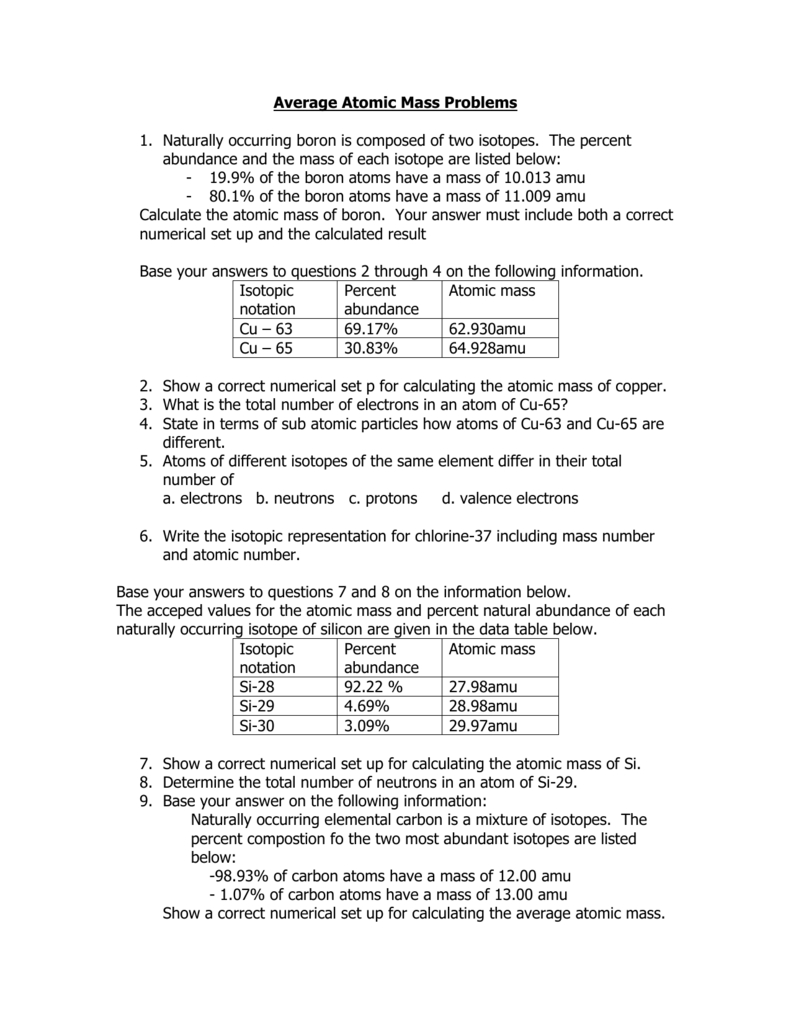

This approach is perfectly acceptable when computing the formula mass of an ionic compound. Note that the average masses of neutral sodium and chlorine atoms were used in this computation, rather than the masses for sodium cations and chlorine anions.

Figure 3.2 outlines the calculations used to derive the molecular mass of chloroform, which is 119.37 amu.įigure 3.4 Table salt, NaCl, contains an array of sodium and chloride ions combined in a 1:1 ratio. The average molecular mass of a chloroform molecule is therefore equal to the sum of the average atomic masses of these atoms.

The molecular formula of chloroform indicates that a single molecule contains one carbon atom, one hydrogen atom, and three chlorine atoms.

Consider chloroform (CHCl 3), a covalent compound once used as a surgical anesthetic and now primarily used in the production of tetrafluoroethylene, the building block for the "anti-stick" polymer, Teflon. Formula Mass for Covalent Substancesįor covalent substances, the formula represents the numbers and types of atoms composing a single molecule of the substance therefore, the formula mass may be correctly referred to as a molecular mass. These ideas can be extended to calculate the formula mass of a substance by summing the average atomic masses of all the atoms represented in the substance’s formula. Formula MassĪn earlier chapter of this text described the development of the atomic mass unit, the concept of average atomic masses, and the use of chemical formulas to represent the elemental makeup of substances. Understanding the relationship between the masses of atoms and the chemical formulas of compounds allows us to quantitatively describe the composition of substances. For example, Dalton’s atomic theory was an attempt to explain the results of measurements that allowed him to calculate the relative masses of elements combined in various compounds. Many argue that modern chemical science began when scientists started exploring the quantitative as well as the qualitative aspects of chemistry. Explain the relation between mass, moles, and numbers of atoms or molecules, and perform calculations deriving these quantities from one another.Define the amount unit mole and the related quantity Avogadro’s number.Calculate formula masses for covalent and ionic compounds.So if this ratio was 3:1 that means there are 3 particles of 35Cl for every particle of 37Cl, and the percent abundance would be 75% 35Cl and 25% 37Cl.įigure 2.3.By the end of this section, you will be able to: Note, the mass spectrum in figure 2.3.2 (b) gives the relative abundance of each isotope, with the peak normalized to the isotope with the highest abundance. The angle of deflection depends on both the mass of the particle and the magnetic field strength, with the lighter particles being deflected more ( the lighter 35Cl + ions are deflected more than the heavier 37Cl + ions.) At the end of the chamber is an exit hole with a detector, and as the magnetic field intensity is increased the deflection angle changes, which separates the particles. These are then accelerated down the chamber until they reach a magnetic field that deflects the particles. The chlorine has multiple isotopes and is hit with a stream of ionizing electrons which break the bond of Cl 2 and strips electrons off the chlorine causing ions to form. In figure 2.3.2 you can see chlorine gas entering an mass spectrometer. mass number (mass : charge ratio).Īlthough we cannot directly measure the mass of atoms, we can use Mass Spectrometer, an instrument that allows us to measure the mass to charge ratio. How do we know what the percent abundance for each of the isotopes of a given element? Isotopes are separated through mass spectrometry MS traces show the relative abundance of isotopes vs. Here is an interesting IUPAC technical report, "Isotope-Abundance Variations of Selected Elements," which describes this, It should not be surprising, but isotopic abundances (% of each isotope) can vary between samples.


 0 kommentar(er)
0 kommentar(er)
